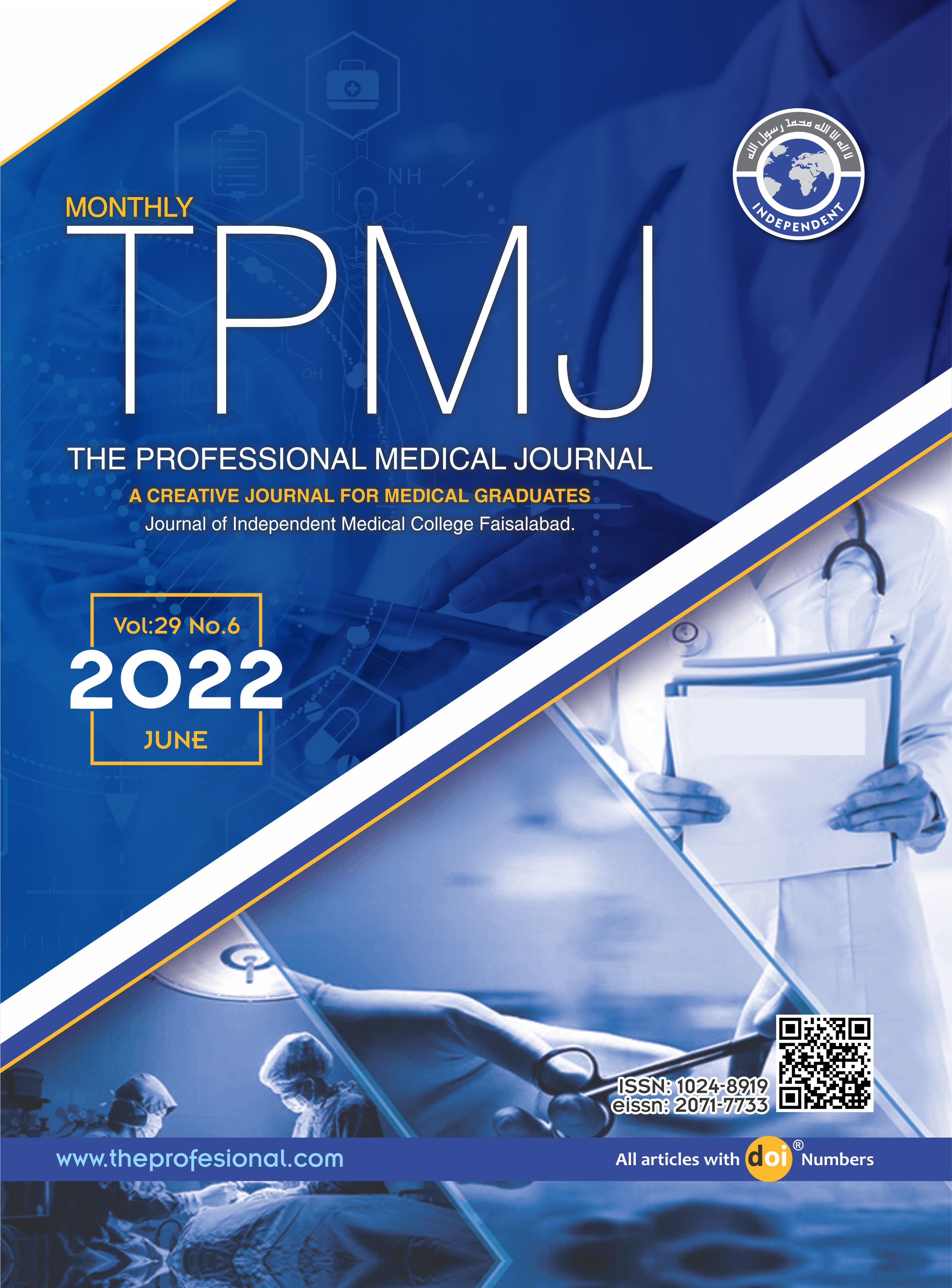Pattern of tooth extraction in a Tertiary Care Hospital-Karachi, Pakistan.
DOI:
https://doi.org/10.29309/TPMJ/2022.29.06.6508Keywords:
Dental Caries, Oral Manifestations in Diabetics, Periodontal Diseases, Relative Risk Factors, Tooth ExtractionAbstract
Objective: To identify the pattern of tooth extraction and its relative risk factors in our local population, in terms of gender distribution and age groups. Study Design: Cross-sectional study. Setting: Department of Oral & Maxillofacial Surgery, Sir Syed College of Medical Sciences for Girls, Karachi-Pakistan. Period: May 2018 to April 2019. Material & Methods: Following the selection criteria, a number of 242 patients were selected with the age ranging from 15 years to 65 years. After history and examination, following information was recorded in a proforma; age, gender, type of tooth extracted, reason for extraction of tooth (caries, periodontal disease, trauma, pericoronitis, impactions, prosthesis, supernumerary teeth and failed root canal treatment), relative risk factors (uncontrolled diabetes mellitus, smokers) were also noted, data was analyzed using SPSS version 21. Results: In 242 patients, 1149 underwent dental extractions in a period of 1 year. Mean age was 36 years with a male predilection. Most commonly extracted tooth was mandibular molar. Most common reason of tooth extraction were dental caries, followed by periodontal diseases. Relative risk factors like diabetes and smoking had a statistically strong association with tooth extraction. Conclusion: Dental extractions were more common in males. Most common reason of tooth extraction was dental caries. Diabetes and smoking are significant relative risk factor for extractions.
Downloads
Published
Issue
Section
License
Copyright (c) 2022 The Professional Medical Journal

This work is licensed under a Creative Commons Attribution-NonCommercial 4.0 International License.


